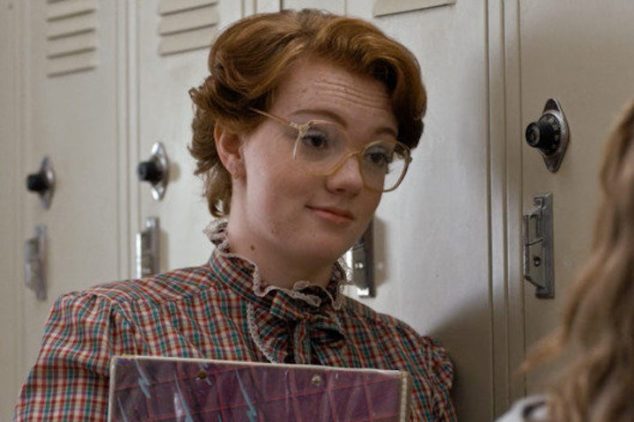Authorial intent is an interesting thing. When crafting a story, be it movie, book, or TV show, the author will tell the audience what to focus on. Typically viewers follow this path. But not always.
In Netflix’s 2016 hit show Stranger Things, the Duffer Brothers crafted a story around a young boy who goes missing. His small town of Hawkins, Indiana is turned upside-down (zing!) looking for him. His family and friends refuses to give up the search even when it seems almost certain that he’s dead. Clearly, we as an audience should care about this boy. But Will Byers, the aforementioned missing kid, only features predominantly in the first episode. On top of that, he’s just one child in a larger friend group of middleschoolers who we come to bond with more. Sure, we care that he’s missing, but we don’t really know him.
Enter Barb. The bespectacled red-haired highschooler is far from the main character. She’s the good friend of Nancy Wheeler, the sister of Mike. In turn, Mike is one of Will’s friends. So at best, she’s three degrees separated from the main action. We’re not supposed to focus on her, and when she goes missing, we’re not supposed to care. Will is missing. We’re looking for Will. But nevertheless, Barb drew audiences in when she first appeared.
Why was this? In a way, it’s because we are Barb. The main characters are trying to find their lost relative/friend. They are in a near constant state of panic. You are unlikely to be someone who’s loved one was kidnapped, and if so, you have my sympathy. But you are much more likely to be someone who can relate to having a friend who’s struggling and who you care about. As Nancy has issues with her boyfriend, Barb is there to give her advice and to console her. Many of the characters are suffering. While we feel for these people, we identify more readily with those who are there to help them. Barb exists on the periphery, seeing people who are in distress and wondering what to do. We as the viewers are in a similar situation. We watch the show and worry about these characters who we’ve grown to care about. Barb is our window into these events.
Of course, it also helps that Shannon Purser is a great actor. Her nomination at last year’s Primetime Emmy Awards for Outstanding Guest Actress in a Drama Series was not a fluke. She occupied Barb’s designated lot in life well. Yes, we knew she wasn’t the main star, but in bringing a character to life that provided normalcy in a town gone wild, she grounded our perceptions. Her extraordinary quality comes simply from the fact that she’s perfectly normal. And that’s okay. In fact, it’s necessary.
This Friday, Stranger Things returns for season 2. Without Barb. While Will is ultimately found to be alive in the alternate world of the Upside Down, Barb is found dead. Very much dead. Oddly enough, once Will is found nobody asks about Barb nor do those who find her body comment on it. The Duffer Brothers wrote her death as a signal for what could happen to Will. They did not anticipate that viewers might actually relate more to her. But as the #ImWithBarb and “justice for Barb” movements took hold on social media, it became evident they cared.
So what does all this mean moving forward into season 2? Well first off, the Duffer Brothers listened to the fans. Apparently the new episodes will address Barb’s death. But the ultimate takeaway is that side characters, not matter how insignificant to the plot, can often be the ones that we relate to or enjoy watching the most (I for one appreciate Mike’s dad, who mostly just sits there silently). The creators announced a few new characters for season 2. There will almost certainly be some side characters among them. No matter how small their contributions may be, I hope at least one of them has us enjoying the few moments they appear. They may be funny, quirky, or just interesting to see every now and again. And if that’s the case, we shouldn’t underestimate their value.




